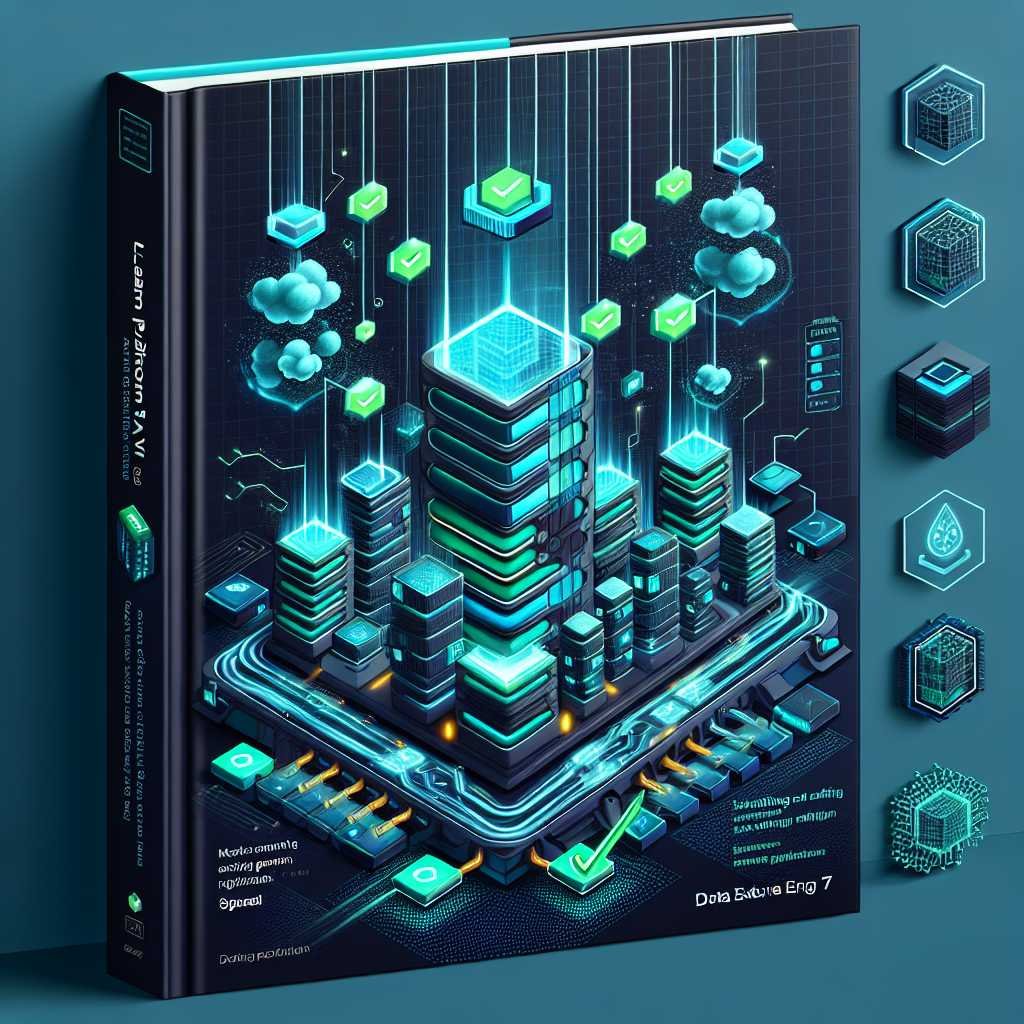Learn Pydantic v2: Master High-Performance Data Modeling and Validation for APIs, ML, and Cloud
If you’ve ever wrestled with messy payloads, brittle schemas, or slow API layers, you already know this truth: data modeling is your leverage. And with Pydantic v2, you get precision, speed, and a clean developer experience—all in one place. This guide shows you how to level up your data validation and serialization across FastAPI, SQLAlchemy, Pandas, Kafka, Airflow, Celery, Docker, Kubernetes, and serverless (AWS and Google Cloud). You’ll also see how to build resilient data contracts for ML, DataOps, and MLOps pipelines without slowing down your team.
Here’s the big promise: learn the modern tools in Pydantic v2 and you can ship safer, faster, more scalable systems—without drowning in glue code.
Let’s get you there.
Why Pydantic v2 Matters Right Now
Pydantic v2 is a serious upgrade. Its Rust-powered core delivers a huge speed boost while giving you more control over validation and serialization. That translates into:
- Faster APIs and pipelines (lower CPU, lower latency)
- Stronger data contracts for microservices and ML features
- Less boilerplate across integrations (FastAPI, SQLAlchemy, Pandas, Kafka, etc.)
Here’s why that matters: data shape drift causes outages. The antidote is a clear, shared schema layer you can trust—backed by performance that doesn’t become the bottleneck.
If you’re building modern systems in Python, think of Pydantic v2 as your “type-in-production” toolkit.
What’s New in Pydantic v2 (and How to Use It)
Pydantic v2 shipped a new architecture and several critical APIs. The highlights:
- Rust-powered core: Validation and serialization run on a Rust engine for dramatic performance gains. See the official docs for details: Pydantic v2.
- Validation vs serialization split: You can customize both sides independently using validators and serializers.
- TypeAdapter: Validate and serialize arbitrary type hints (not just BaseModel).
- From attributes instead of orm_mode: Use
from_attributes=Trueinmodel_config. - New decorators:
@field_validatorand@model_validator(replace v1 validators)@field_serializerand@model_serializer@computed_field- JSON Schema and OpenAPI improvements:
model_json_schema()and clean integration with FastAPI. Annotatedsupport to attach constraints and custom validators at the type level.- Strictness: Make parsing safe by default with
ConfigDict(strict=True)orAnnotated[..., Strict()].
A quick mental model:
– Validate input with model_validate() or TypeAdapter.validate_python().
– Serialize output with model_dump() or model_dump_json() and custom serializers.
– Generate schema with model_json_schema() and plug into OpenAPI via FastAPI.
Core Patterns for High-Performance Models
These patterns are your daily drivers:
- Prefer
TypeAdapterfor validating lists, unions, and complex nested types quickly. - Use
ConfigDict(strict=True)to avoid loose coercions that cause silent bugs. - Use
from_attributes=Truefor ORM integration. - Keep I/O out of validators. Pydantic is synchronous; do network/DB calls before or after validation in your async functions.
- Use discriminated unions for polymorphic payloads.
Example snippet with strict types and discriminated unions:
“`python from typing import Literal, Union from pydantic import BaseModel, Field, ConfigDict
class CardPayment(BaseModel): model_config = ConfigDict(strict=True) type: Literal[‘card’] = ‘card’ last4: str = Field(min_length=4, max_length=4) amount: int
class BankPayment(BaseModel): model_config = ConfigDict(strict=True) type: Literal[‘bank’] = ‘bank’ iban: str amount: int
Payment = Union[CardPayment, BankPayment] “`
Now validation can be precise and fast.
Dynamic Schema Structuring with Annotated and TypeAdapter
Pydantic v2 leans into Python typing. Annotated lets you attach constraints and validators directly to your types. TypeAdapter turns any type hint into a first-class validator/serializer.
Annotated[int, ...]to constrain integers.TypeAdapter[List[MyModel]]to validate bulk data efficiently.
Why it matters: you can centralize business rules at the type layer, then reuse those rules across services, tasks, and notebooks.
Learn more: – Pydantic type system and adapters: Pydantic v2 docs
FastAPI + Pydantic v2: Clean Requests, Clear Responses, Perfect Docs
FastAPI remains the gold standard for Python APIs, and it pairs naturally with Pydantic v2 for request/response validation and OpenAPI.
- Request models: validate inbound data and return friendly errors.
- Response models: ensure data leaving your service matches the contract.
- OpenAPI: auto-generated from your models.
“`python from fastapi import FastAPI from pydantic import BaseModel, ConfigDict
app = FastAPI()
class UserIn(BaseModel): model_config = ConfigDict(strict=True) email: str active: bool = True
class UserOut(BaseModel): id: int email: str
@app.post(“/users”, response_model=UserOut) def create_user(payload: UserIn): # persist user… return UserOut(id=1, email=payload.email) “`
Tip: Use @field_serializer to format outbound fields (e.g., masking PII). Use json_schema_extra in Field() to enrich docs.
SQLAlchemy + Alembic: Orm-Ready Models Without Leaky Abstractions
Pydantic v2 replaced orm_mode with from_attributes. This is how you map ORM entities to API shapes without coupling layers.
“`python from pydantic import BaseModel, ConfigDict
class UserModel(BaseModel): model_config = ConfigDict(from_attributes=True) id: int email: str is_active: bool “`
- Use
.from_orm()? In v2, usemodel_validatewithfrom_attributes=Trueor configure the model as above. - For DDL changes: keep migrations clean using Alembic and keep your Pydantic models focused on API and domain logic.
References: – SQLAlchemy: SQLAlchemy – Alembic: Alembic
Pro tip: Define “DB models” (SQLAlchemy) and “API/domain models” (Pydantic) separately. Translate between them with lightweight mappers. Your tests will be simpler, and your schemas will remain stable as the database evolves.
Dataclasses, Typer, and CLI Contracts
For internal tooling and CLIs, Pydantic v2 plays nicely with dataclasses and Typer:
- Use
pydantic.dataclasses.dataclassto get validated dataclasses. - Build CLIs with Typer and validate options/arguments with Pydantic models.
Resources: – Typer: Typer – Poetry for packaging: Poetry
Why this matters: clean CLIs reduce operational mistakes. Validated structs become shareable config contracts across jobs and services.
Pandas + Pydantic: Validate Datasets and Feature Tables
DataFrame reality check: columns drift, NaNs sneak in, and types lie. Use Pydantic models to validate records or batches:
- Validate row-wise with
TypeAdapter[List[Model]]againstdf.to_dict(orient="records"). - Serialize validated data back to JSON for downstream systems.
- Avoid coercions—set strict mode and validate datetime and numeric semantics (e.g., decimals for currency).
References: – Pandas: Pandas
Performance tip: when validating large datasets, batch validation with TypeAdapter is noticeably faster than creating models one row at a time.
Kafka and Microservices: Strong Data Contracts on the Wire
When you produce or consume messages, schemas are your safety net. Model your payloads with Pydantic and serialize with model_dump_json().
- Use discriminated unions for event types.
- Embed versioning and
sourcemetadata in your models. - Validate on both producer and consumer sides for belt-and-suspenders safety.
References: – Apache Kafka: Kafka
In schema-registry environments, Pydantic models can co-exist with Avro/Protobuf contracts as a developer-first layer. Keep them in sync via tests.
Airflow and Celery: Typed Configs and Safer Orchestration
Task configs are notorious for “it worked on my machine” bugs. Pydantic locks this down.
- Airflow: validate DAG params, connections, and dataset payloads before task execution.
- Celery: validate task input and result shapes to stabilize worker boundaries.
References: – Apache Airflow: Airflow – Celery: Celery
Add pydantic-settings for environment management:
– Pydantic Settings: pydantic-settings
With validated settings, you’ll catch misconfigurations early (wrong URLs, missing secrets, bad feature flags).
JSON Serialization Done Right
Pydantic v2 separates validation and serialization, giving you explicit control.
model_dump()returns Python data.model_dump_json()returns JSON bytes or string.- Customize field output with
@field_serializerand@model_serializer. - Use
by_alias=Trueto map internal names to API-facing names.
Keep floats/decimals consistent, serialize datetimes as ISO-8601 with timezone, and ensure you don’t leak internal fields. In FastAPI, you can rely on its encoder or use Pydantic’s to guarantee consistency.
Python stdlib reference: – JSON module: json
OpenAPI and Documentation: No Extra Work
Because FastAPI introspects Pydantic models, you get OpenAPI for free. Use these techniques to polish docs:
Field(description="...")for clear descriptions.Field(examples=[...])to show valid values.json_schema_extrafor format hints and vendor extensions.model_json_schema()for custom tooling or schema publishing.
Helpful resources: – FastAPI docs: FastAPI – OpenAPI spec: OpenAPI
Async Validation: What You Need to Know
You can validate inside async routes and tasks, but validators themselves are synchronous. That’s a good thing: no hidden I/O in your model layer.
Best practice: – Do I/O (DB lookups, HTTP calls) outside validators. – Validate the shape and types with Pydantic. – Then enforce cross-resource constraints in your async code where you can await safely.
This keeps your validation layer predictable and fast.
Testing and CI/CD: Trust, but Verify
Pydantic helps you write tests that catch changes before they ship.
- Use
validate_callto assert function contracts at runtime. - Snapshot or golden-file test your serialized output for regressions.
- Property-test critical models with Hypothesis to explore edge cases.
- Run schema generation in CI and publish JSON Schema alongside your API for other teams.
Extras: – CI/CD overview: GitHub Actions or GitLab CI/CD – Hypothesis (for property-based tests): Hypothesis
Docker, Kubernetes, and Performance in Production
Deploying validated systems at scale demands good ops hygiene:
- Lean images: multistage builds, install with Poetry, avoid dev dependencies.
- Health and readiness: expose predictable endpoints backed by Pydantic responses.
- Observability: log structured JSON from Pydantic models.
- CPU tuning: Rust core helps, but benchmark and right-size workers.
References: – Docker: Docker – Kubernetes: Kubernetes
Tip: avoid massive model graphs in hot paths; pre-validate at boundaries (ingress), pass typed domain objects internally.
Serverless with AWS Lambda and Google Cloud Functions
Serverless rewards cold-start efficiency and small payloads. Pydantic v2’s speed shines here.
- Validate event objects on entry; serialize responses deterministically.
- Reduce import overhead; keep models near handlers, or share a small package.
- Log minimal, structured events for faster troubleshooting.
References: – AWS Lambda: AWS Lambda – Google Cloud Functions: Google Cloud Functions
Databases: PostgreSQL and MongoDB Considerations
RDBMS vs. document DB calls for different modeling strategies:
- PostgreSQL: strongly typed columns map well to strict Pydantic fields. Use decimals for money, timezone-aware datetimes, and UUIDs.
- MongoDB: schemas can drift; Pydantic enforces shape at the application boundary. Use discriminated unions for polymorphic docs and
extra='forbid'to prevent silent field creep.
References: – PostgreSQL: PostgreSQL – MongoDB: MongoDB
ML, MLOps, and DataOps: Data Contracts for the Win
ML systems live or die by consistent features. Use Pydantic to lock down:
- Feature schemas for training and inference
- Prediction request/response schemas
- Batch scoring payloads and Kafka topic events
This reduces training-serving skew and incident rates.
- MLOps overview: Google MLOps
- DataOps intro: DataOps Manifesto
Putting It Together: A Minimal Project Blueprint
Here’s a high-level blueprint for a resilient, scalable service:
- API layer: FastAPI + Pydantic v2 for request/response models and OpenAPI.
- Domain models: Pydantic v2 with strict mode, serializers, and discriminated unions.
- DB: SQLAlchemy models separate from API models; map with
from_attributes=True. - Messaging: Kafka producers/consumers validating payloads with the same Pydantic models.
- Orchestration: Airflow DAG parameters and Celery tasks typed with Pydantic.
- Config:
pydantic-settingsfor environment variables. - CI: schema snapshots and contract tests; publish JSON Schema for consumers.
- Deploy: Docker + Kubernetes with health checks; observability via structured logs.
This isn’t just cleaner—it’s safer, faster, and easier to scale.
Common Pitfalls (and How to Avoid Them)
- Silent coercions: enable strict mode globally or per field.
- Timezones: always use timezone-aware datetimes; serialize as ISO-8601.
- Floats for money: use
Decimaland serialize as strings. - Enormous unions: prefer discriminated unions via a
typefield for performance and clarity. - I/O in validators: don’t. Keep validators fast and pure.
- Pandas NaNs/NaTs: normalize before validation; be explicit about nullability.
Useful Links and Docs
- Pydantic v2: Pydantic
- FastAPI: FastAPI
- SQLAlchemy: SQLAlchemy
- Pandas: Pandas
- Apache Kafka: Kafka
- Celery: Celery
- Apache Airflow: Airflow
- Poetry: Poetry
- Typer: Typer
- Docker: Docker
- Kubernetes: Kubernetes
- OpenAPI: OpenAPI
- AWS Lambda: AWS Lambda
- Google Cloud Functions: Google Cloud Functions
- PostgreSQL: PostgreSQL
- MongoDB: MongoDB
- Pydantic Settings: pydantic-settings
FAQ: Pydantic v2, Performance, and Real-World Use
Q: Is Pydantic v2 backward compatible with v1?
– Partially. Many concepts remain, but APIs changed. For example, @root_validator became @model_validator, and orm_mode became from_attributes. Use the migration guide in the docs for a smooth upgrade.
Q: How do I enforce strict types globally?
– Set model_config = ConfigDict(strict=True) on your model base class. You can also use Annotated[..., Strict()] for fields where you need targeted strictness.
Q: Are validators async in Pydantic v2? – No. Validators are synchronous. Run I/O before or after validation in your async functions to keep the model layer pure and fast.
Q: What’s the difference between validation and serialization in v2? – Validation parses input into typed Python objects. Serialization controls how those objects are turned back into JSON/Python data. In v2, both are customizable via dedicated decorators and config.
Q: How do I convert SQLAlchemy models to Pydantic?
– Configure your Pydantic models with from_attributes=True, then pass ORM objects to model_validate. Keep ORM models and Pydantic models separate to avoid leaking DB details.
Q: Can I generate JSON Schema for my models?
– Yes. Use model_json_schema() for Pydantic models or TypeAdapter(...).json_schema() for arbitrary type hints. FastAPI automatically uses this for OpenAPI docs.
Q: How should I validate DataFrames?
– Convert with df.to_dict(orient="records"), then validate using TypeAdapter[List[YourModel]]. Batch validation is faster and simpler than row-wise model construction.
Q: What’s the best way to handle polymorphic payloads?
– Use discriminated unions. Add a type field and use Union[SubTypeA, SubTypeB] with Field(discriminator='type') for clarity and performance.
Final Takeaway
Pydantic v2 gives you a fast, expressive way to define and enforce data contracts across APIs, pipelines, and ML systems. When you combine it with FastAPI, SQLAlchemy, Pandas, Kafka, and modern DevOps tools, you get a stack that’s not only high-performance—but also resilient and easy to reason about.
If you found this useful, keep exploring the links above—and consider diving deeper into Pydantic v2 best practices for your next project. Want more guides like this? Subscribe or follow along for advanced patterns, real-world examples, and performance recipes.
Discover more at InnoVirtuoso.com
I would love some feedback on my writing so if you have any, please don’t hesitate to leave a comment around here or in any platforms that is convenient for you.
For more on tech and other topics, explore InnoVirtuoso.com anytime. Subscribe to my newsletter and join our growing community—we’ll create something magical together. I promise, it’ll never be boring!
Stay updated with the latest news—subscribe to our newsletter today!
Thank you all—wishing you an amazing day ahead!
Read more related Articles at InnoVirtuoso
- How to Completely Turn Off Google AI on Your Android Phone
- The Best AI Jokes of the Month: February Edition
- Introducing SpoofDPI: Bypassing Deep Packet Inspection
- Getting Started with shadps4: Your Guide to the PlayStation 4 Emulator
- Sophos Pricing in 2025: A Guide to Intercept X Endpoint Protection
- The Essential Requirements for Augmented Reality: A Comprehensive Guide
- Harvard: A Legacy of Achievements and a Path Towards the Future
- Unlocking the Secrets of Prompt Engineering: 5 Must-Read Books That Will Revolutionize You







